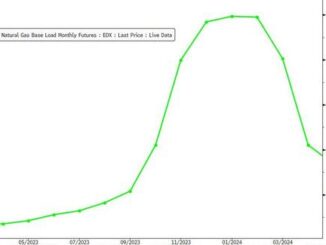
Crude oil futures were higher in mid-morning Asian trade Aug. 4, rebounding from five-month lows after bearish US oil data and supply increases from OPEC+ sent oil prices plummeting to levels not seen since before the Russia-Ukraine war broke out.
At 11:00 am Singapore time (0300 GMT), the ICE October Brent futures contract was up 39 cents/b (0.4%) from the previous close at $97.17/b, while the NYMEX September light sweet crude contract rose 46 cents/b (0.51%) at $91.12/b.
Oil prices plummeted by close to 4% overnight after US Energy Information Administration data Aug. 3 showed demand weakening sharply in the US, with implied gasoline demand plunging 7% in the week ended July 29 to 8.54 million b/d.
This left it nearly 11% behind the five-year average for this time of year.
US gasoline stocks rose by 160,000 barrels to 225.29 million barrels over the same period, the EIA said, while US commercial crude stocks climbed 4.5 million barrels to about 426.6 million barrels.
“Yesterday’s price plunge had panic written all over it,” Vandana Hari, CEO of Vanda Insights, told S&P Global Commodity Insights Aug. 4. “Given that it was a disproportionate response if the only reason was the bearish elements of the EIA data, you can bet on a bounce back. The question is, how much of a rebound can one expect.”
Overnight, prompt crude futures reached their lowest levels since Russia’s invasion of Ukraine on Feb. 24 created widespread disruptions in global supply networks and sent prices soaring.
The EIA data appeared to confirm an increasingly bearish macroeconomic outlook for the global economy as soaring inflation, high oil prices and rising interest rates drive consumers to cut back on spending.
“The weekly EIA crude oil inventory was very bearish,” OANDA’s senior market analyst Edward Moya said in an Aug. 3 note. “The demand outlook might be much worse than everyone was thinking as US gasoline demand fell 7.1% despite lower prices and this still being peak summer vacationing time.”
Hari said: “The winds of recessionary fears are blowing stronger.”
OPEC+, in a highly anticipated meeting Aug. 3, said it would implement a modest 100,000 b/d rise in production quotas for September in a slight gesture to US President Joe Biden, who pressed for more supplies to tackle high oil prices.
The move was also a big nod to Russia and other members that sought a measured approach to protect their windfall earnings.
“OPEC+ offered to add only 100,000 barrels a day extra for September, citing ‘severely limited’ spare production capacity which should be used with ‘great caution in response to severe supply disruptions,” OCBC Treasury Research analysts said in a note.
Dubai crude swaps were lower in mid-morning trade in Asia Aug. 4 from the previous close, though intermonth spreads were mixed.
The October Dubai swap was pegged at $90.81/b at 10 am Singapore time (0200 GMT), down $1.59/b (1.72%) from the Aug. 3 Asian market close.
The September-October Dubai swap intermonth spread was pegged at $2.03/b at 10 am, down 21 cents/b over the same period, and the October-November intermonth spread was pegged at $1.55/b, up 1 cent/b.
The October Brent-Dubai EFS was pegged at $6.36/b, down 72 cents/b.
Source: Spglobal.com



